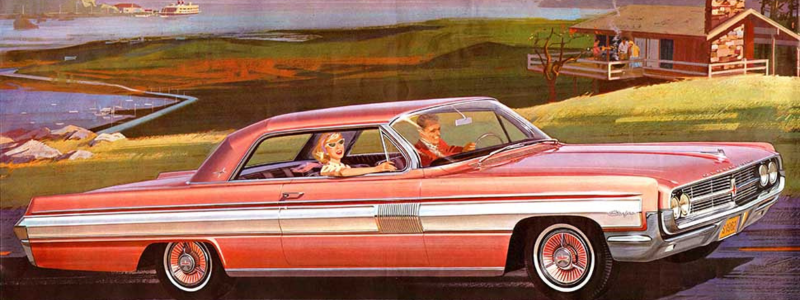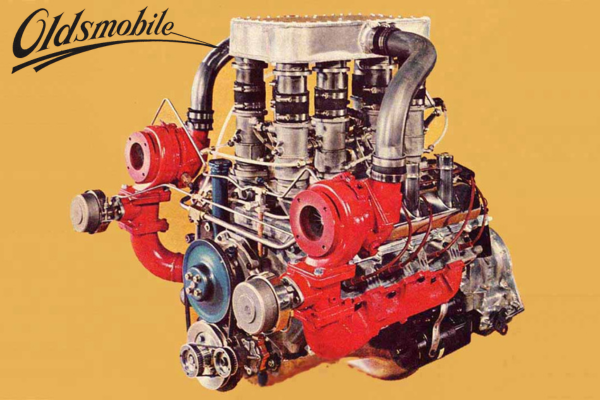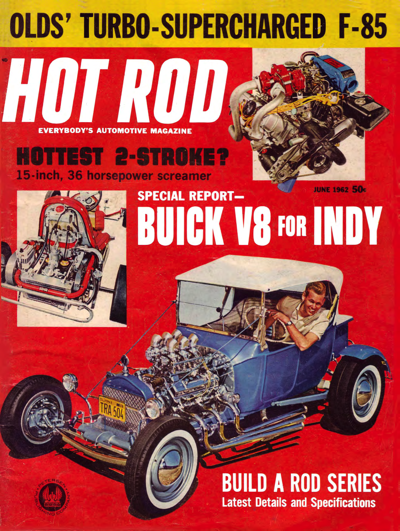1905 Rambler Described In Detail
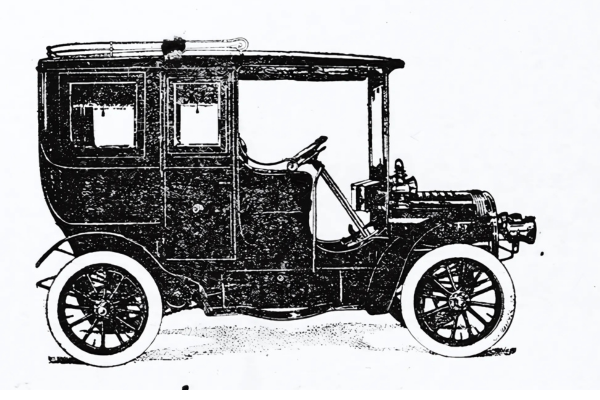
1905 Rambler Type Two Limousine
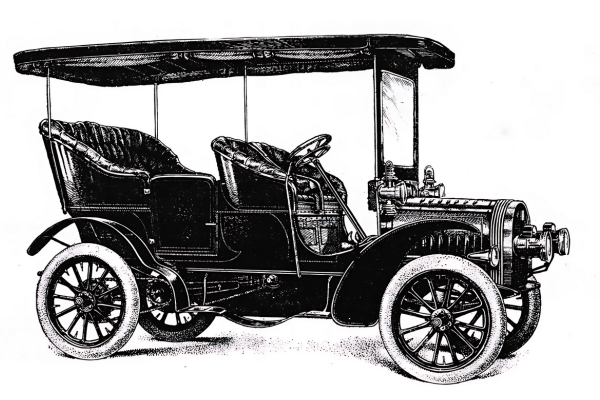
1905 Rambler Type Two Surrey
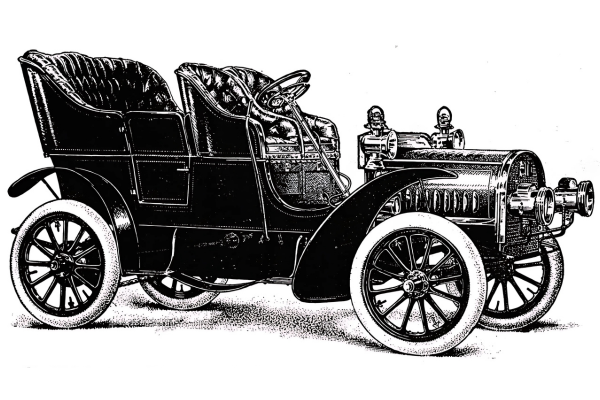
1905 Rambler Type One Surrey
General Year Information
By 1905, Thomas B. Jeffery’s Rambler brand was quickly becoming one of America’s most respected early automakers.
Key highlights from 1905:
- Production Expansion: Rambler was already one of the top five automakers in the United States in terms of production. In 1905, the company reportedly built over 2,300 cars, a major feat for the time. That made them second only to Oldsmobile in output — putting Jeffery in elite company.
- Introduction of the Steering Wheel: This was a transitional year for Rambler, as it marked the end of the tiller-steering era. Up to this point, many Ramblers (and cars in general) were controlled by tillers. In 1905, Rambler began equipping some models with steering wheels, responding to both market demand and driver expectations.
- Model Variety & Innovation: The 1905 Rambler lineup included several body styles, including runabouts, tonneaus, and surreys. Rambler was one of the few companies offering shaft drive over the more common chain drive, a more sophisticated and reliable system. Their engines were reliable single- and two-cylinder units, typically in the 6–10 horsepower range, with air cooling used in some earlier models but water cooling becoming standard.
- Marketing to the Masses: While many early automakers targeted wealthy buyers, Rambler embraced the idea of the car as a middle-class tool — not just a toy for the elite. Jeffery’s philosophy, “Don’t experiment, just build good cars,” reflected a practical and market-driven approach. The company focused on practicality, ease of use, and reliability.
Dealer Networks & Advertising: By 1905, Rambler had built a growing network of dealers and was promoting its vehicles through national advertising — in publications like The Horseless Age and Motor Age — highlighting its technological advantages and the company’s manufacturing integrity.
Models Offered
The Rambler Model G was the entry-level offering. Powered by an 8-horsepower single-cylinder engine and riding on an 81-inch wheelbase, the Model G was simple, sturdy, and affordable at $750. Designed as a two-passenger open runabout, it embodied Rambler’s mission to provide practical, reliable transportation to everyday drivers. Equipped with shaft drive — a rare feature among its chain-driven competitors — and often tiller-steered (though some received early steering wheels).
The Rambler Model H was the four-passenger companion to the Model G, sharing its 8-horsepower single-cylinder engine and 81-inch wheelbase, but featuring a more spacious rear-entrance tonneau body. Priced at $850, the Model H offered early motorists a practical yet refined touring option — perfect for families or professionals who needed room for passengers without stepping into the premium segment. Like its sibling, it utilized Rambler’s advanced shaft drive system, which delivered smoother and cleaner operation than the more common chain drives of the time. The rear entrance design was typical of the era, allowing for a distinct social formality in entering and exiting the car.
The Rambler Type One marked a bold step forward for the Thomas B. Jeffery Company, introducing a two-cylinder, 18-horsepower engine and an expanded 90-inch wheelbase, offering a more powerful and refined driving experience. Designed as a four-passenger touring car, it catered to customers seeking comfort, performance, and prestige without reaching the luxury price tier. Priced at $1,200, the Type One was equipped with shaft drive, robust coachwork, and increasingly, a steering wheel — a modern alternative to the traditional tiller. This model reflected the evolving tastes of early motorists who were beginning to expect greater speed, smoother operation, and more driver control. As one of Rambler’s higher-tier offerings, the Type One combined innovation with craftsmanship.
The Rambler Type Two stood at the pinnacle of the company’s 1905 offerings. Powered by a 20-horsepower two-cylinder engine and riding on a spacious 100-inch wheelbase, the Type Two was offered in two upscale body styles: a stylish Surrey priced at $1,650, and an elegant Limousine, commanding a remarkable $3,000 — a price that rivaled some homes of the day.
The Surrey was ideal for formal or leisure driving, while the closed Limousine catered to the elite, including business owners, livery services, and early automotive connoisseurs. Lavishly appointed interiors, custom coachwork, and the sheer presence of the vehicle made the Type Two a status symbol — and a rare sight on early American roads.
Engines
In 1905, Rambler offered two distinct engine types, both air-cooled in their earliest iterations but standardized to water-cooled by this year — a major step forward in reliability and performance. Designed in-house, these engines reflected thier commitment to simplicity, durability, and everyday usability.
Found in Models G and H, Rambler’s rugged 1-cylinder engine produced 8 horsepower, delivering smooth, steady performance ideal for city use and light touring. Mounted beneath the seat or under the hood depending on body style, it was paired with a shaft drive system — a forward-thinking alternative to the common chain drive of the time.
Featured in the Type One and Type Two, Rambler’s more powerful 2-cylinder engine produced between 18 and 20 horsepower, depending on configuration. It offered a quieter, more refined ride and greater climbing ability, which made it well-suited for longer trips, larger bodies, and heavier passengers. The opposed-cylinder layout ensured better balance and less vibration, enhancing ride quality — a critical concern for early automobile buyers.
Power Train Options
Rambler set itself apart with thoughtfully engineered, dependable powertrains across its 1905 lineup. The company’s emphasis on mechanical reliability helped establish its reputation as one of America’s most trustworthy early automakers.
- Shaft Drive Standard:
All 1905 Rambler models were equipped with shaft drive, a major advancement over the more common (and less durable) chain drive used by many competitors. Shaft drive provided cleaner operation, reduced maintenance, and smoother power delivery, especially on rough early roads. It was a defining Rambler innovation, rooted in Thomas B. Jeffery’s belief in producing practical, long-lasting automobiles. - Manual Transmission:
Rambler vehicles featured a selective sliding-gear transmission, manually operated via a floor-mounted lever. Depending on the model, cars came with two or three forward speeds, plus reverse. Gear ratios were carefully matched to the engine’s power output, giving drivers confident control on hills and open roads alike. - Rear-Wheel Drive (RWD):
Like most cars of the era, Rambler utilized rear-wheel drive, with the final drive connected via an enclosed driveshaft. This arrangement contributed to even weight distribution and durability — especially important in rural areas where roads were primitive or nonexistent.
Paint Colors
- Brewster Green
- Carmine Red
- Maroon
- Black
- Dark Blue
Factory Options
- Steering Wheel Upgrade
- Acetylene Gas Head Lamps
- Kerosene Side Lamps
After Market Options
Sears, Roebuck and Co. began offering car accessories and parts in their catalog in 1908. Recognizing the growing popularity of automobiles and the increasing need for car parts and accessories, Sears expanded its extensive mail-order catalog to include a variety of automotive products. This move allowed Sears to cater to the burgeoning market of car owners, providing them with the convenience of ordering necessary parts and accessories directly to their homes, particularly benefiting those in rural areas with limited access to local auto parts stores. This innovative approach helped Sears solidify its reputation as a versatile and customer-focused retailer.



